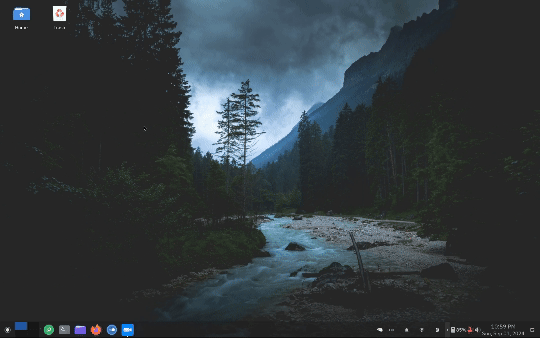The wait is over! We are thrilled to unveil rlxos 2.0, codenamed "Sankalpa" – a Sanskrit word signifying "determination." This release embodies our unwavering commitment to crafting a Linux distribution that prioritizes safety, reliability, and user-friendliness. Prepare to experience a revolution in how you interact with Linux, thanks to major advancements in both technology and design.
Ignite: A New Dawn for rlxos Development
A User Interface Reborn: Beauty and Simplicity Merge
Immerse Yourself in Smooth Animations
Refined Aesthetics with Updated Themes and Fonts
Effortless App Navigation
Shell Enhancements for Seamless Productivity
Software Management Simplified
Sysroot: Revolutionizing System Management
Switch Update Channels: Choose between the stable and reliable update channel or opt for the unstable channel for faster access to the latest features.Add Extensions: Extend your rlxos experience by installing extension packs tailored to your needs. Choose from developer tools, virtualization with QEMU, or window managers like i3 and Sway.
Small But Significant Improvements
Faster Setup: Search for your timezone during initial setup, streamlining the onboarding process.Welcome App: The welcome app now guides you through theme and HiDPI settings upon installation.Uniform Looks: libadwaita is patched to align with the system theme.CA-Certificates Fix: Eliminate issues with invalid certificates after system updates. Certificates are now automatically included and updated.
Transparency: Acknowledging Known Issues
Initial Login on QEMU: When running rlxos on QEMU-based virtual machines, the initial login at the login manager might fail. This issue does not affect real hardware. Simply retry the login if you encounter this.Manuals and Documentations: Man pages and documentation might be unavailable for certain apps and commands.Parole: The default video and music player, Parole, might not play videos correctly on specific graphics hardware.Sysroot Extensions at Initial Boot: While not a bug, this behavior might be confusing for new users. Sysroot requires a "previous system state" to add extensions, but this state is not available on the first boot. Simply run a system update using Sysroot to create the necessary state, allowing seamless extension addition after rebooting.QEMU Extensions: Networking with virt-manager from QEMU extensions might not function correctly due to the default network configuration.Sway on NVIDIA: Sway extensions might fail to start or function properly on systems with NVIDIA GPUs.Software Center Theme: Upon initial launch, the Software Center might use the Adwaita (light) theme instead of the rlxos default dark theme. To resolve this, navigate to Settings -> Appearances and switch themes. We've patched libadwaita to use the system theme in future updates.




0 comments:
Post a Comment